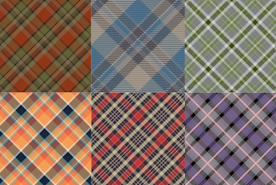
Call 0330 880 3600 Calls may be monitored or recorded. Opening Times.
- TRAVEL INSURANCE
- COVID-19 ENHANCED COVER
- More Options
- Help & Advice
- Existing Customers

Call 0330 880 3600 Calls may be monitored or recorded. Opening Times.

 3,000 years ago in a Bronze Age tomb in Xinjiang in Western China, a man was buried wearing what could be described as ‘tartan’ leggings. Further investigation proved that the man was in fact a Celt, making his garb perhaps the earliest known example of this significant fabric.
3,000 years ago in a Bronze Age tomb in Xinjiang in Western China, a man was buried wearing what could be described as ‘tartan’ leggings. Further investigation proved that the man was in fact a Celt, making his garb perhaps the earliest known example of this significant fabric.
Tartan, alongside the kilt and Americanised plaid, are unmistakably associated with the Scottish. It’s also linked to the values of courage, fight, and hardiness, as well as the music and culture of the Highlands. However, it’s not always been so simple, and the origins of tartan has been questioned and controversial since it was banned in the 18th century.
Originally, tartan was more a fabric than a pattern, and was only different across parts of Scotland due to the natural dyes available in the area. To begin with, local weavers would use sheep’s wool which was only really available in black, brown, or white, but over time they were able to introduce a variety of colours into their patterns using naturally-available resources like berries, bark, and leaves. Birch could turn the wool yellow, heather orange, and berries purple or blue. Highlanders had a deep connection with the world around them, and often believed that spiritual entities like goblins or fairies inhabited rocks, trees, or plants. This led to the wearing of tokens such as leaves or twigs to signify a true connection to the land which provided for them.
The wearing of tartan then, was important to the Scots. When it came to war they would wear it during battle, and although Gaelic foot soldiers were sometimes considered clumsy or unsteady, the sight of tartan rising across the battlefield was a formidable sight. In fact, when fighters from the Highlands were defeated in 1746, the English government outlawed tartan dress, except for Scottish militia loyal to England.
As you can imagine the Scots weren’t a fan, and there was widespread resentment in response to the ban, giving tartan a rebellious sort of reputation. Thankfully, thirty-five years later the ban was repealed, and it’s around this point that the controversy grows roots.
Historians continue to argue about whether tartans post-ban are actually representative of specific Scottish clans, or whether its re-emergence has more to do with popular culture of the time. In the 19th century, tartan became part of a fashion boom, potentially due to George IV’s visit to Edinburgh. It had been almost 200 years since a monarch’s last visit, and the Scottish greeted him in swathes of authentic and traditional tartan garb. The event made tartan a real staple in mainstream Scottish identity, and to this day it is known of the Royal Family to wear tartan when visiting the Highlands.
Tartan as both a fabric and a pattern continues to be heralded the world over, known across the globe for its association with Scottish culture. The rebellious nature of it is even reflected in counter-cultures like punk, and in the work of fashion designers such as Vivienne Westwood. The stories tartan tells truly pay homage to its undeniable popularity across the years.
No-one really knows where the word 'tartan' comes from! Here are some speculations:
- IrishScots words tuar meaning 'colour', and tan meaning 'district'.
- Scottish Gaelic tarsainn meaning 'across' or 'crossing over'.
- French tiretaine meaning a linen and wool mix fabric.
- Spanish tartana meaning 'shiver', referring to a type of cloth.
- Gaelic breacan meaning 'chequered'.
BY HOLLY GARWOOD, 2ND APRIL 2024